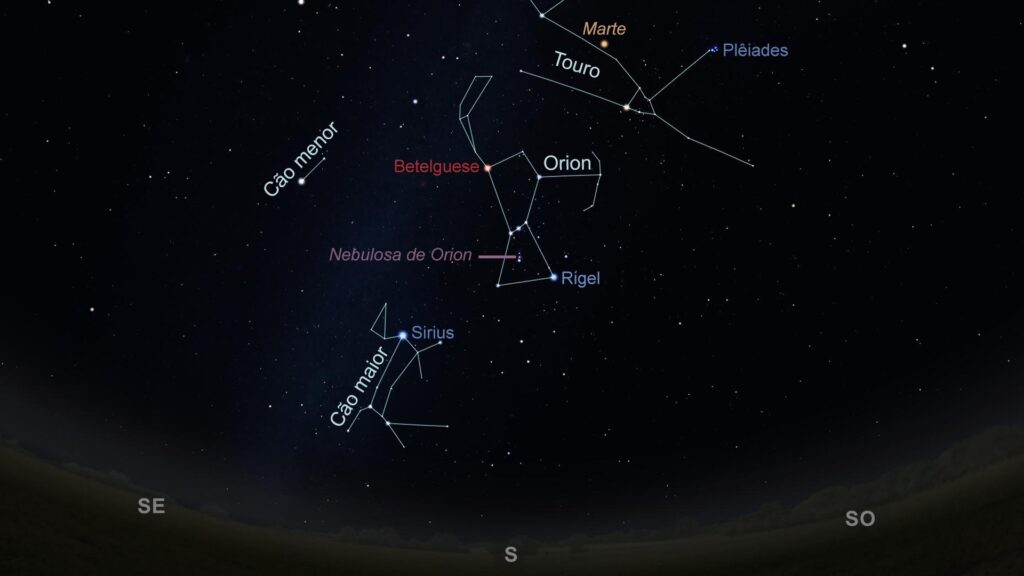In this month of February 2023, dusk gives us a planetary spectacle – facing West, the planets Jupiter and Venus are perfectly visible.
After the conjunction with Saturn (which is passing in front of the Sun and is only visible again at dawn, at the end of March), the apparent movement of Venus continues to move it away from the Sun, and, therefore, during this month , you can see higher and higher in the sky, while approaching the planet Jupiter, until the conjunction of the two on March 1st.
However, the Moon, on its monthly journey across the sky, still joins the two planets.
On the 5th, we have the full moon, with the last quarter arriving on the 13th and the new moon on the 20th. Therefore, we only see the Moon passing close to planets towards the end of the month.
On the 22nd, the three brightest astronomical objects in the night sky come together, separated by less than 7 degrees. On this day, a thin crescent of the Moon will be 3,5 degrees from Jupiter and 4 degrees from Venus, roughly halfway between the two planets.
The Moon (which, despite being still very dimly illuminated, is already at magnitude -8,2), Venus (with magnitude -3,9) and Jupiter (with magnitude -2,1) are, respectively, the first, second and third brightest objects in the night sky.
Note that the smaller the magnitude, the brighter the object. The full moon, at magnitude -12, is the brightest object in the sky at night, and our star, the Sun, at magnitude -26,7, is by far the brightest object in the sky. The brightest star in the night sky, Sirius, in the constellation Canis Major, is magnitude -1,5.
Canis Major, together with Canis Minor, are the hunting dogs of Orion (or Orion), the hunter, one of the typical winter constellations. This constellation can be easily found, at this time of year, as a huge rectangle of bright stars, which has 3 stars inside, of similar brightness, but very aligned.
In the lower right corner is Rigel, the 7th brightest star in the sky. It is a blue supergiant, 80 times larger than the Sun and 18 times the mass of our star. Blue stars are the hottest, with surface temperatures above 10000 K.
In the upper left corner of the rectangle is the star Betelgeuse, a red supergiant, with a mass only 14 times greater than the Sun, but about 890 times greater than our star – if it were in the Sun's place, Betelgeuse would almost reach the orbit of Jupiter! Being a red star, it is also less hot than the Sun, with a temperature of around 3600K.
The three stars lined up, in the middle of the rectangle, design Orion's belt, which around here are also known as Três Marias. Just below these is the sword of Orion. With the naked eye, in a dark sky, around the star in the middle of the sword, you can see a nebulosity, which is the Great Nebula of Orion, one of the largest nurseries of stars in the region.
In a few tens of millions of years, it will give rise to a swarm of stars similar to the Pleiades, in the constellation of Taurus, the constellation where we also find the planet Mars.
And since we are talking about Mars, on the 27th the Moon reaches its first quarter and at dawn from the 27th to the 28th it passes just 2 degrees from this planet.
Good remarks!




















Comments